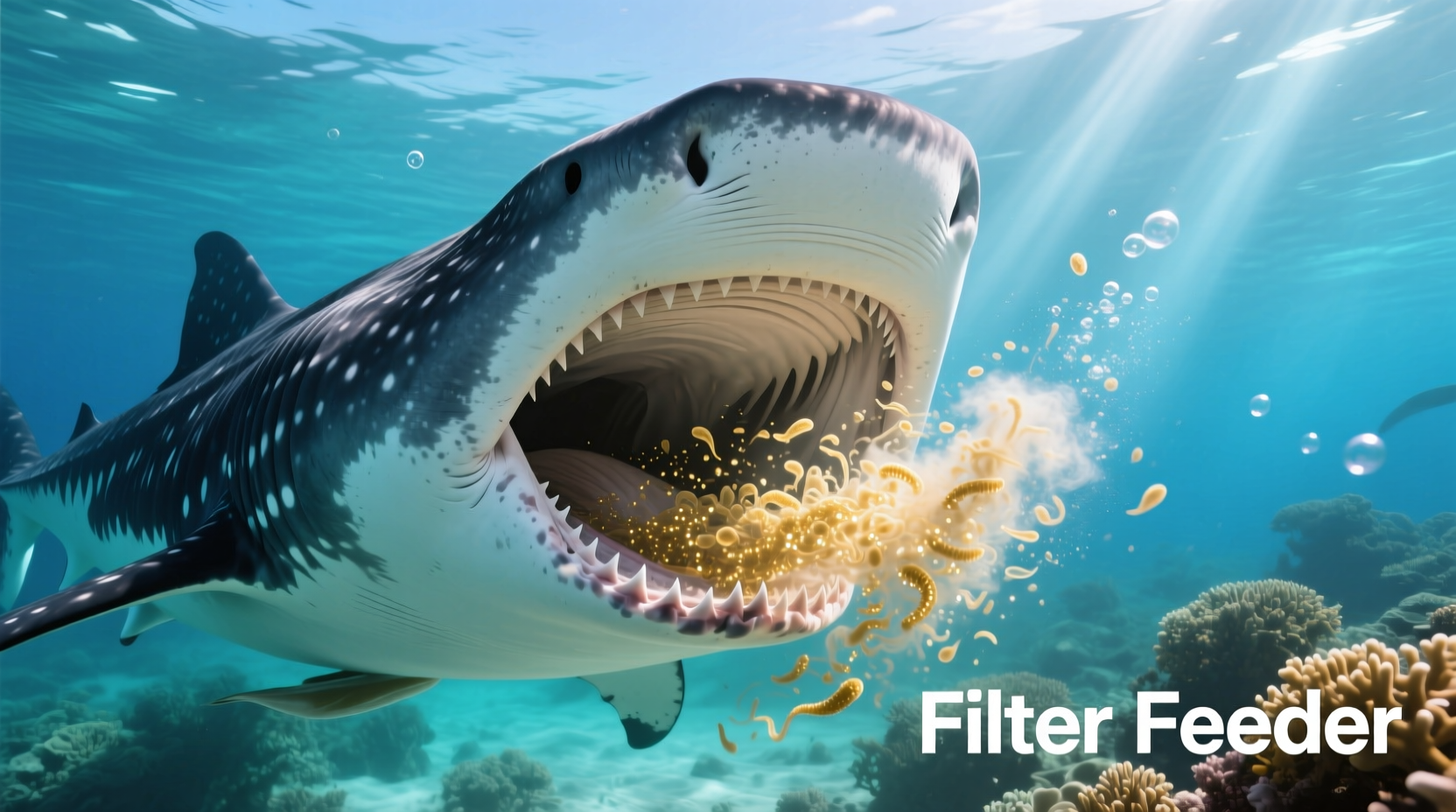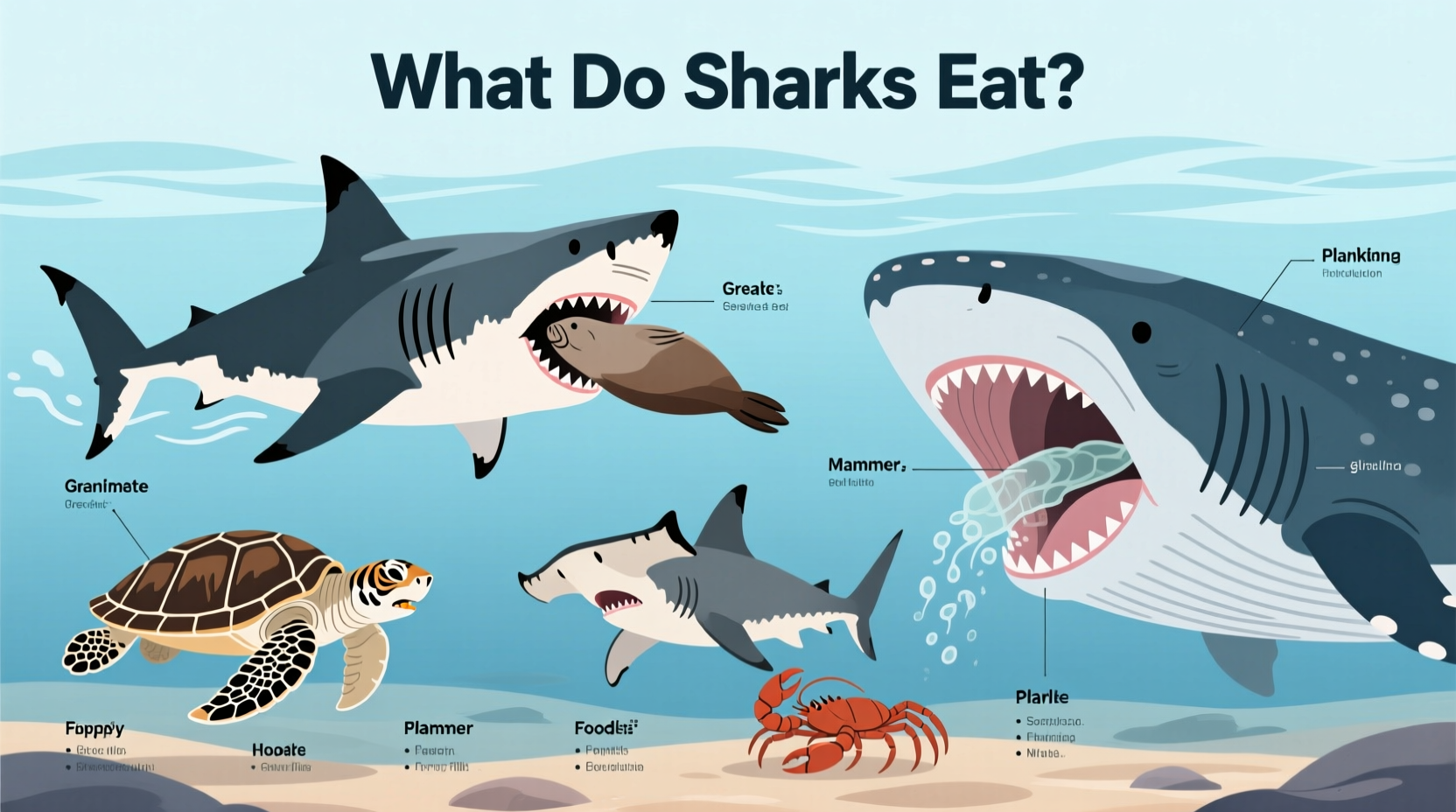Ever wondered what fuels these ocean predators? Understanding shark diets reveals fascinating insights about marine ecosystems and dispels common misconceptions. Whether you're curious about great white sharks' hunting habits or whale sharks' gentle feeding methods, this guide delivers science-backed information about what sharks eat across different species and life stages.
Shark Species and Their Distinct Diets
Shark diets vary dramatically across species, with specialized feeding adaptations evolved over millions of years. Contrary to popular belief, not all sharks hunt large prey—many consume smaller organisms that match their physical capabilities.
| Shark Species | Primary Diet | Feeding Method | Unique Adaptations |
|---|---|---|---|
| Great White | Seals, sea lions, fish | Ambush predation | Sharp serrated teeth for tearing flesh |
| Tiger Shark | Wide variety including fish, turtles, birds | Opportunistic scavenging | Powerful jaws for crushing shells |
| Whale Shark | Plankton, krill, small fish | Filter feeding | Enormous mouth with filter pads |
| Hammerhead | Stingrays, fish, squid | Electroreception hunting | Wide head for detecting prey signals |
| Mako Shark | Fast fish like tuna, mackerel | High-speed pursuit | Streamlined body for rapid acceleration |
This comparison reveals how shark diets directly correlate with their physical adaptations. The Smithsonian National Museum of Natural History confirms that shark feeding strategies have evolved over 400 million years to maximize hunting efficiency in specific marine environments.
How Sharks Hunt: From Ambush to Filter Feeding
Sharks employ various hunting techniques that match their dietary preferences:
Ambush Predators: The Great White's Strategy
Great white sharks use vertical ambush tactics, attacking seals from below with explosive speed. Their hunting success rate reaches 50-60% according to research published in the Journal of Experimental Marine Biology and Ecology. These sharks target high-fat marine mammals to meet their substantial energy requirements.
Opportunistic Feeders: The Tiger Shark's Approach
Tiger sharks earned the nickname "garbage cans of the sea" due to their incredibly diverse diet. The Florida Museum of Natural History documents cases of tiger sharks consuming everything from sea turtles to license plates. Their powerful jaws allow them to crush hard-shelled prey like sea turtles and crustaceans.
Filter Feeders: Gentle Giants of the Ocean

Despite their massive size, whale sharks and basking sharks consume microscopic organisms. These gentle giants swim with mouths open, filtering plankton through specialized gill rakers. A single whale shark can process over 6,000 liters of water per hour while feeding, according to NOAA Fisheries research.
How Shark Diets Change Throughout Their Lives
Shark feeding habits evolve significantly as they mature—a phenomenon scientists call ontogenetic dietary shift. This context boundary affects what different life stages consume:
- Nursery areas: Juvenile sharks eat small fish and invertebrates in protected coastal zones
- Adolescence: As sharks grow, they transition to larger prey like squid and medium-sized fish
- Adulthood: Mature sharks hunt according to their species' specialized diet
Research from the Monterey Bay Aquarium Research Institute shows that young great white sharks primarily consume fish until they reach about 3 meters in length, when they begin targeting marine mammals. This dietary shift corresponds with physical development of their hunting capabilities.
Debunking Common Shark Diet Myths
Popular media has created numerous misconceptions about shark feeding behavior:
Myth: Sharks frequently eat humans
Shark attacks on humans are extremely rare, with fewer than 100 unprovoked attacks reported globally each year. Most incidents result from mistaken identity—sharks confusing surfers with seals. The International Shark Attack File confirms humans don't appear in shark stomach contents during dietary studies.
Myth: All sharks constantly hunt large prey
Many shark species eat small organisms and require relatively little food. Bottom-dwelling species like nurse sharks consume crustaceans and small fish, while filter feeders process microscopic plankton. Sharks generally eat 0.5-3% of their body weight daily, far less than popular media suggests.
Practical Takeaways About Shark Diets
Understanding what sharks eat provides valuable insights for ocean conservation and human-shark coexistence:
- Shark diets reflect their role as apex predators maintaining marine ecosystem balance
- Overfishing of shark prey species directly impacts shark populations
- Knowing regional shark diets helps develop effective beach safety protocols
- Filter-feeding sharks serve as indicators of ocean health through plankton consumption
Next time you wonder what do great white sharks eat or whether whale sharks pose any threat, remember that shark feeding behaviors are specialized, efficient, and crucial to ocean health—not the mindless predation portrayed in movies.











 浙公网安备
33010002000092号
浙公网安备
33010002000092号 浙B2-20120091-4
浙B2-20120091-4